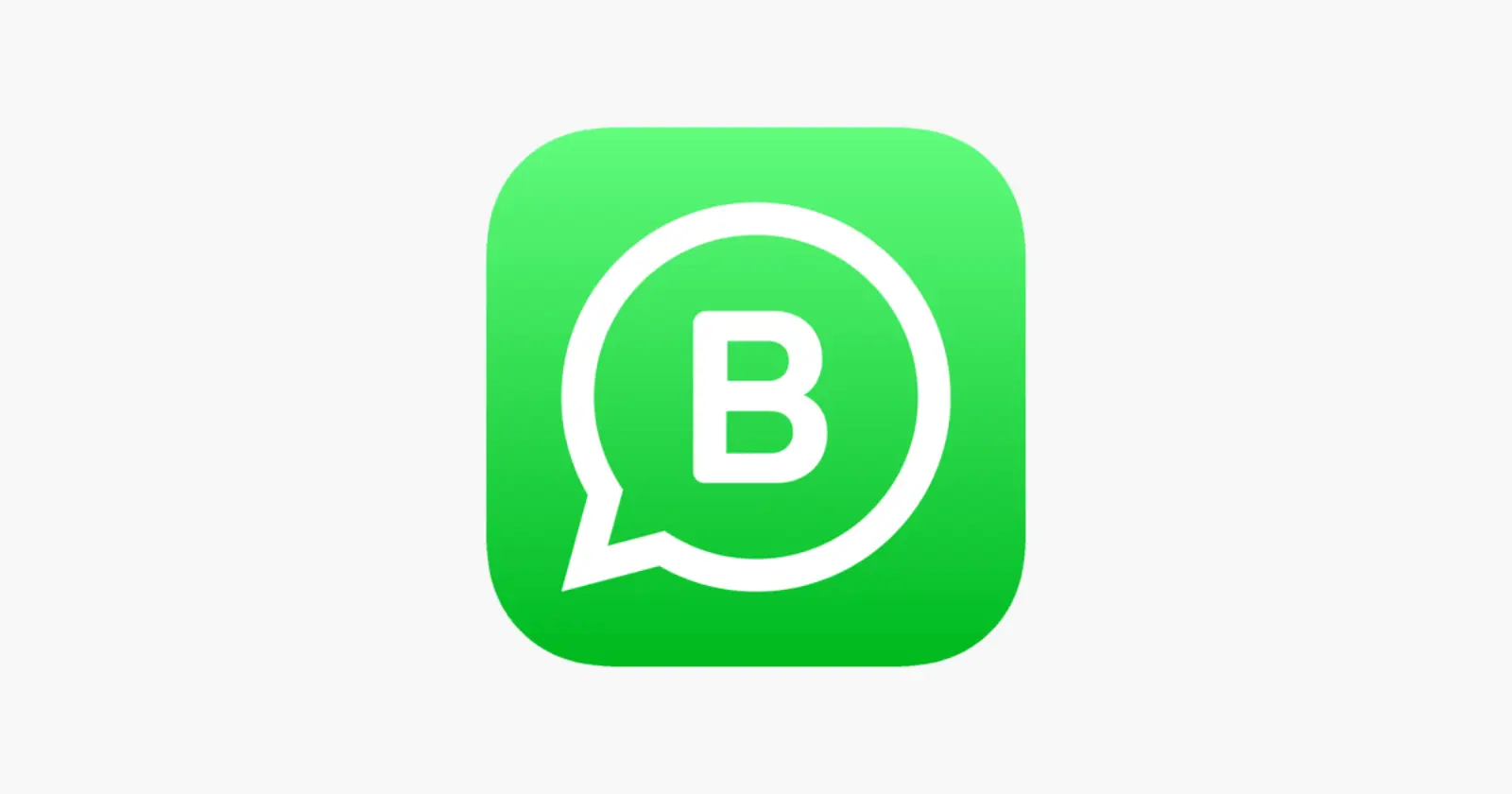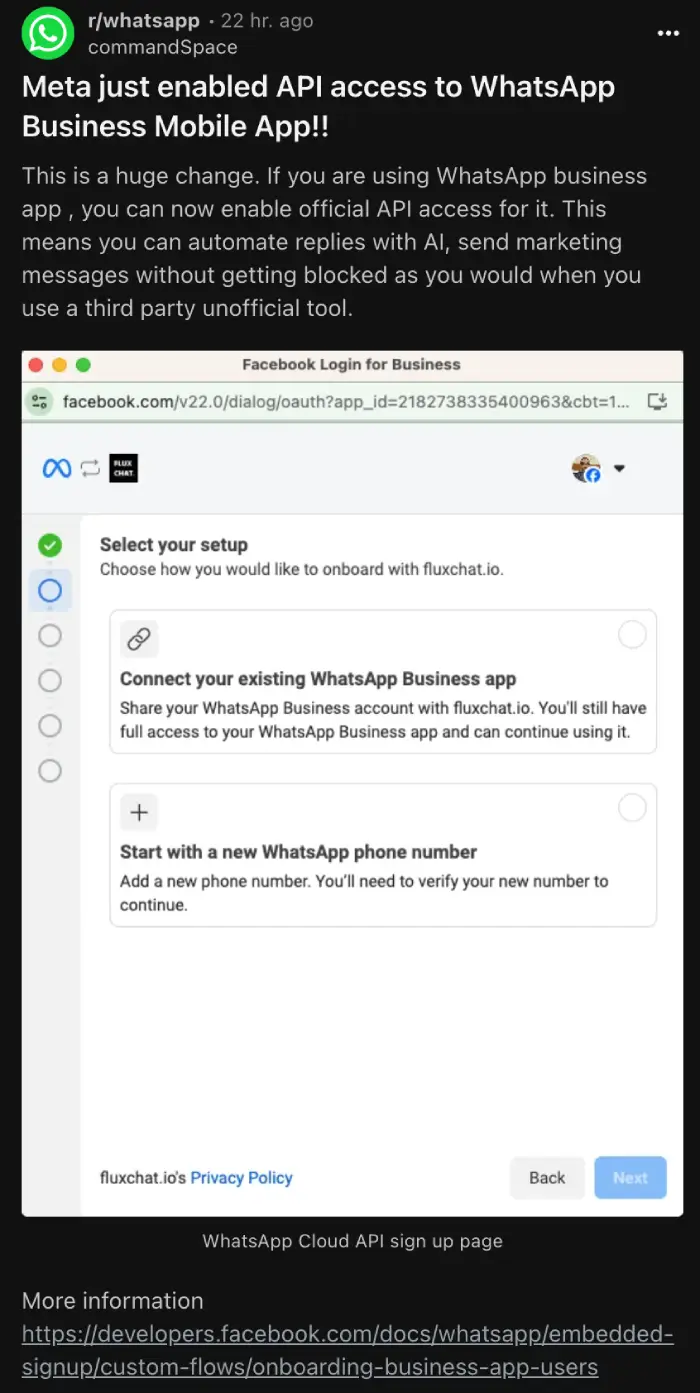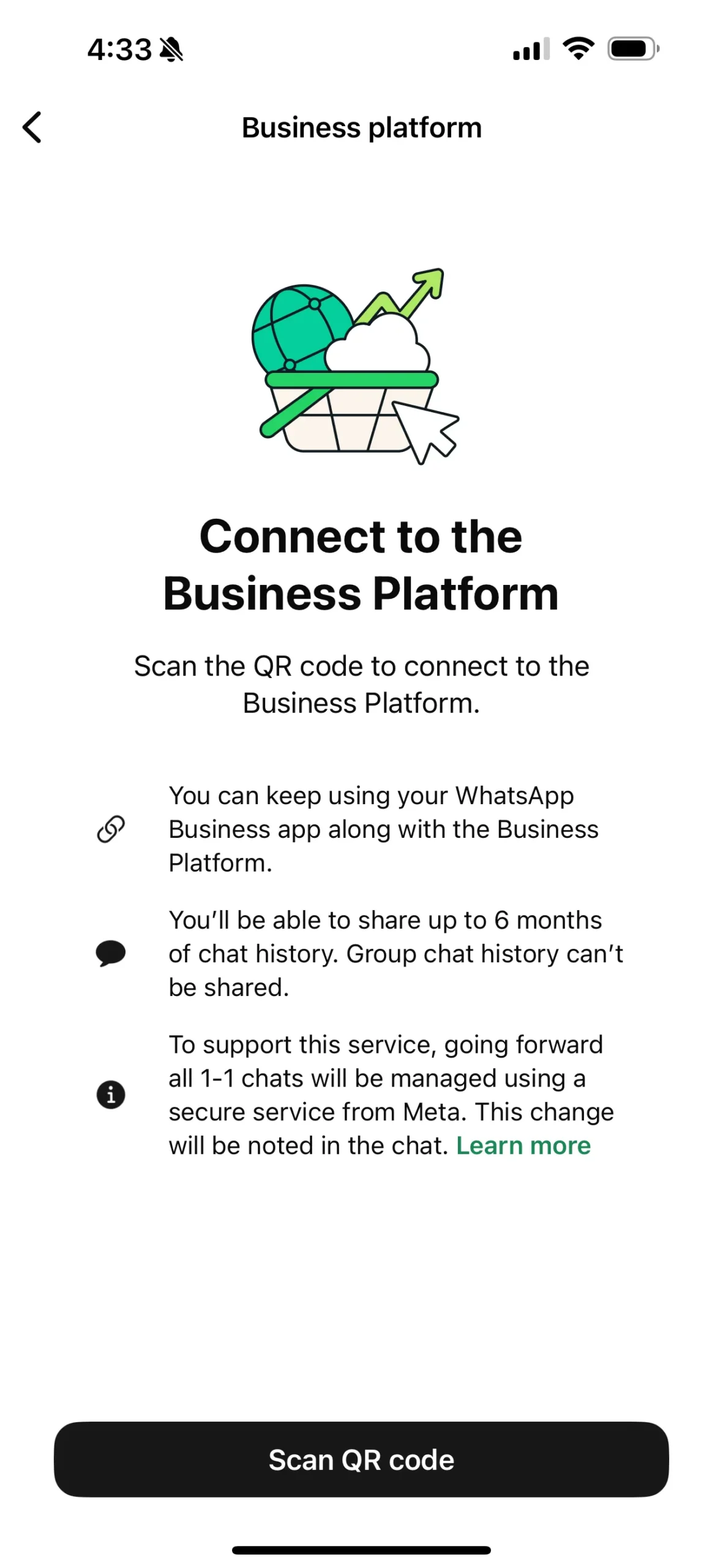A significant shift might be underway for businesses using the WhatsApp Business mobile application. I spotted a Reddit post highlighting that Meta has started allowing these users to connect directly to its official Cloud API platform. However, this integration is currently restricted to businesses working with Meta-approved solution partners or tech providers. Additionally, unsupported regions include Australia, India, Japan, the Philippines, Russia, South Korea, Turkey, and all countries in the European Union, European Economic Area, and the UK.
For small businesses relying solely on the mobile app, this integration could be a game-changer. To connect, businesses must use WhatsApp Business app version 2.24.17 or newer and scan a QR code via Embedded Signup, which syncs their chat history (up to 6 months) and contacts to the Cloud API. It potentially unlocks capabilities like setting up AI-powered automated replies and sending marketing messages more formally.
However, messages sent via the API will incur conversation-based fees, while those sent directly through the mobile app remain free. According to one user, u/commandSpace, on Reddit, this official route means businesses can send “marketing messages without getting blocked as you would when you use a third party unofficial tool.” The change implies that messages sent via the API could sync directly with the mobile app, allowing business owners to manage communications flexibly.
Concerns about potential spam often arise with easier marketing tools. However, Meta reportedly has measures in place. For instance, customer service windows only open when users message businesses after Cloud API onboarding. Pre-existing chats can only be answered with template messages, preventing spam from legacy conversations. These aim to limit the volume of marketing messages users receive, preventing businesses from overwhelming customers.
If this integration becomes widespread, it could offer millions of WhatsApp Business app users a way to enhance customer communication without needing complex technical setups. It blends the convenience of the mobile app with some of the scalability benefits previously limited to the API. For more details, you can check out the official documentation.
TechIssuesToday primarily focuses on publishing 'breaking' or 'exclusive' tech news. This means, we are usually the first news website on the whole Internet to highlight the topics we cover daily. So far, our stories have been picked up by many mainstream technology publications like The Verge, Macrumors, Forbes, etc. To know more, head here.




